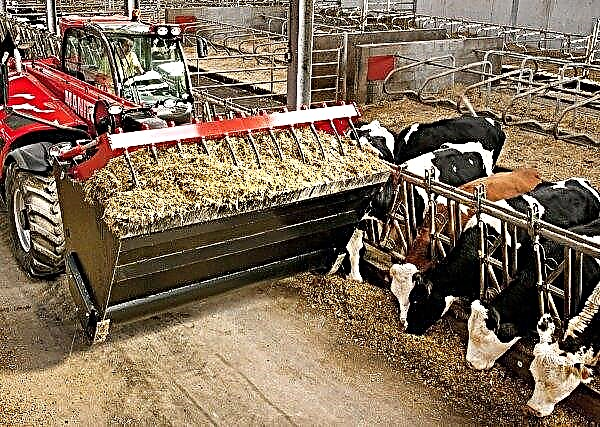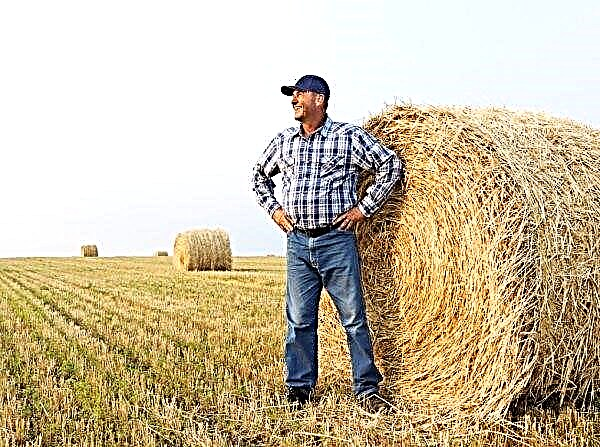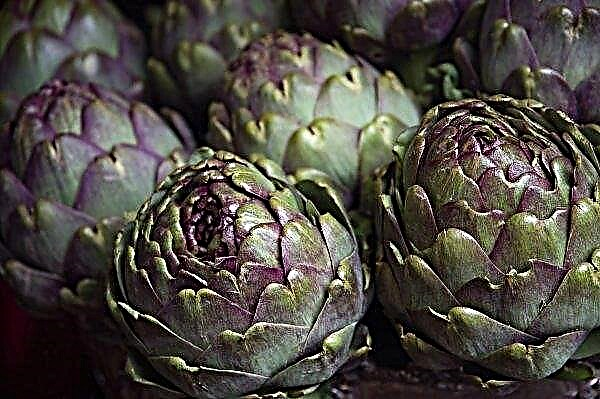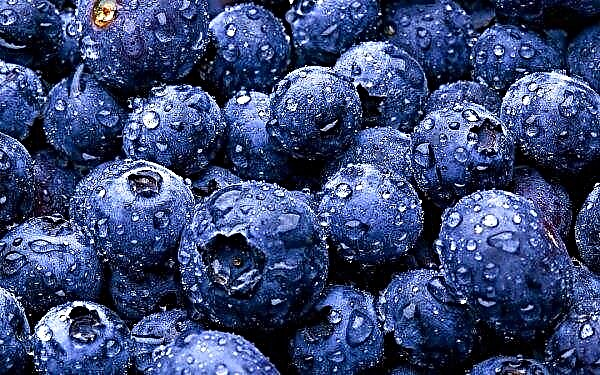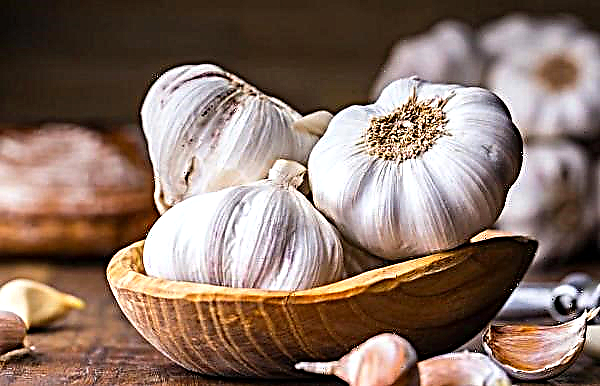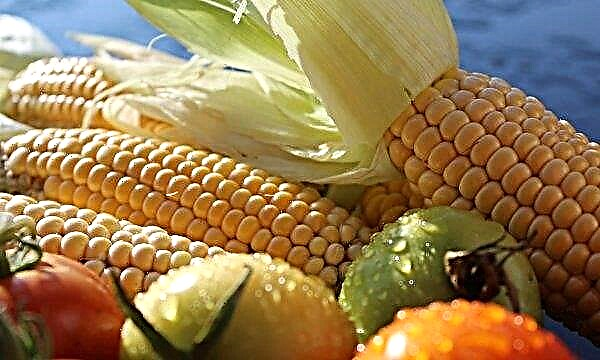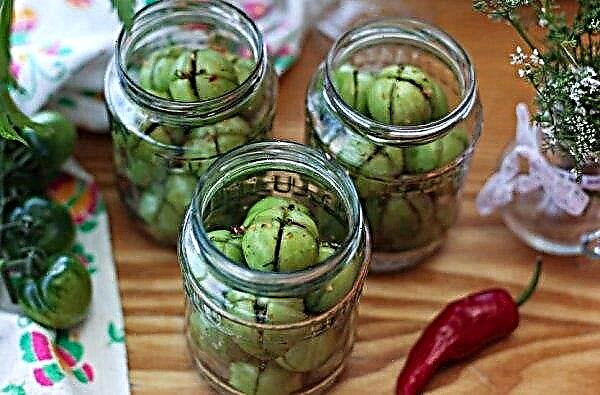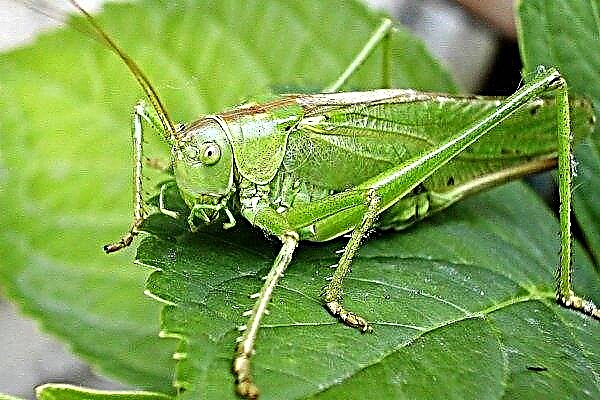Cirrus asparagus, often called "chill" or "cobweb", has long and firmly won the love of flower growers for the beauty and grace of delicate green leaves, the fluffy and airy appearance of the bush and the low maintenance requirements.
Botanical description of the plant
Perennial shrub native to South Africa. It grows in ampel form or curls as a vine if it finds support. Lacy phyllocladies — branches that act as leaves, have the shape of a feather or herringbone and give the perennial resemblance to a fern. A spider web blooms very soon, over the age of 10 years. The flowers are small, white, form black berries with several seeds.
Important! The berries of the asparagus are poisonous, therefore it is necessary to limit access to them for children and pets or to remove them from the bush in a timely manner.
A brief description of the plant in the table below:
| Life form | Perennial shrub |
| Roots | Horizontally growing rhizomes |
| Shoot shape | Phyllocladia long, thin, curly |
| Shoot color | Green |
| Leaf shape | Underdeveloped, scaly |
| Leaf color | Brown |
| Flower shape | Single, small |
| Flower color | White |
| Fruit shape | Round berry with 1-3 seeds |
| Fruit color | The black |
House growing conditions
It is not difficult to create conditions for a comfortable life of a perennial, any beginner grower will cope with this.
Location
Neighborhood with other indoor plants is undesirable, the stalks of the cobweb will cling and wrap around everything they get to. Undemanding lighting is an advantage that allows you to place a flowerpot in the lobby or on the side of the room opposite to the window. Bright and intense southern light is poorly tolerated; the eastern, western and northern window will be optimal. Additional lighting in winter is not required.
Did you know? Asparagus is popular not only in indoor floriculture, it is used to decorate bouquets, create flower arrangements in gardens and courtyards, and in phytodesign of offices.
Temperature
Comfortable temperature in the summer is maintained within +22 ... + 25 degrees, a higher temperature is poorly tolerated. From direct sunlight, the plant is shaded. In winter, it is advisable to lower the temperature to +12 ... + 15 degrees so that the stems do not die.
Air humidity
Asparagus develops well with sufficient humidity and loves spraying, especially during the hot season and during central heating. It will weaken if it is too dry and hot, and will become more prone to attack by pests.
Home Care
The chill owes its popularity in indoor floriculture not only to its refined decorativeness, but also to its unpretentiousness in content. A beginner grower can safely acquire it and not be afraid to make an irreparable mistake.
Important! Choosing a plastic pot is not recommended. Powerful rhizomes can grow so much that the plastic will burst.
Watering
Water for irrigation of the shrub is taken at room temperature. It is watered abundantly in summer, 2-3 times a week, less often in winter, as the surface of the earth dries in a pot. You can use watering through the pan. Drying of the soil should not be allowed, otherwise the leaves will fall off, but it should not be too wet.
Top dressing
Asparagus needs regular top dressing in spring and summer when young shoots grow. Together with watering, liquid complex mineral fertilizers are applied weekly, alternating with organic ones. In winter, they feed no more than once a month.
Pruning
Shrubs should not be pruned. Cropped shoots will cease to grow and branch, having lost decorativeness, and the rhizome will begin to spend energy on laying new buds. It is recommended that only old branches be removed after they have lost leaves.
Did you know? Asparagus, whose name is translated from Latin as “asparagus”, has an edible relative - it is grown manually, only young shoots are eaten. Other types of asparagus have healing properties and are widely used in medicine.
Transfer
Cirrus asparagus is transplanted immediately after acquisition, and then, as the roots grow, when there is not enough space in the pot. Next, an adult plant needs a transplant in the spring every three years. The container for transplant is taken wide, spacious, larger in size than the previous one. Soil suitable ordinary universal for indoor plants. You can make the soil mixture yourself from equal parts of sheet, turfy soil and sand. Before falling asleep, a drainage layer is laid at the bottom.
After removing the bush from the old pot, it is necessary to inspect the rhizome and make sure that there are no pests. Then remove all decayed and shrunken roots, which have grown very much - cut. Old bare branches also trimmed. Next, place the root lump in a new flowerpot, cover it with a substrate, tamp a little and moderately pour settled water at room temperature. Feeding can be done after a week or two, when the places of cuts on the roots heal.
Video: Asparagus transplant
Breeding
There are several ways to propagate cirrus asparagus:
- cuttings;
- by seeds;
- dividing the bush.
Cuttings
Cuttings are carried out in February-March. Several last year's branches up to 15 cm long are cut, which are dug in wet sand and covered with a film to maintain the necessary air humidity. After rooting, after about a month and a half, they are dived (transplanted) from the greenhouse into small pots. This method of reproduction is rarely used due to the frequent death of young shoots.
Seeds
It will be much more successful to grow cirrus asparagus from seeds than in the previous way:
- Seeds are pre-cleaned of berry pulp. If they are bought in a store, soak for a day in a pale pink solution of potassium permanganate.
- Prepared seeds are shallow placed in a substrate consisting of a mixture of peat and sand.
- The germination tank is covered with a film and made sure that the surface does not dry out.
- Watering is done from the spray gun, so as not to erode the ground. The temperature is maintained at about 22 degrees with regular ventilation.
- Shoots appear in a month, they can be dived at 10 cm and in the summer they can already be transplanted into permanent flowerpots.
Video: asparagus seed propagation
Dividing the bush
Division is the most popular method of propagation, in which several ready-made plants with roots and leaves are quickly obtained.
For this, an overgrown bush that needs a transplant is suitable:
- The chill is removed, the lump of land with rhizomes is carefully divided into several parts so that each has several branches.
- Then the bushes are planted in individual pots, moderately watered and shaded.
- After 1-2 weeks, flowerpots are placed in a permanent place.

Growing difficulties
Despite all its unpretentiousness, the plant may feel uncomfortable, reporting its condition with yellowing leaves. Most often this happens with improper care of the flower. The reasons why asparagus feathery turns yellow can be several:
- insufficient or excessive watering;
- insufficient humidity;
- excessive lighting;
- lack of nutrients in the soil;
- the need for a transplant.
A much more complicated situation is when the attack of the following pests leads to the death of a bush:
- spider mite;
- aphid;
- scale shield;
- thrips;
- mealybug.
 The bush should be regularly and thoroughly inspected and bathed until the complete disappearance of insects. It is much easier to prevent a bush disease than to cure it later. Regular airing in this regard is the most effective means. Do not forget to take care of your flower, because it needs very little of your attention, and in gratitude it will delight the eye with the elegant bends of fluffy openwork greenery at home and in the garden.
The bush should be regularly and thoroughly inspected and bathed until the complete disappearance of insects. It is much easier to prevent a bush disease than to cure it later. Regular airing in this regard is the most effective means. Do not forget to take care of your flower, because it needs very little of your attention, and in gratitude it will delight the eye with the elegant bends of fluffy openwork greenery at home and in the garden.

